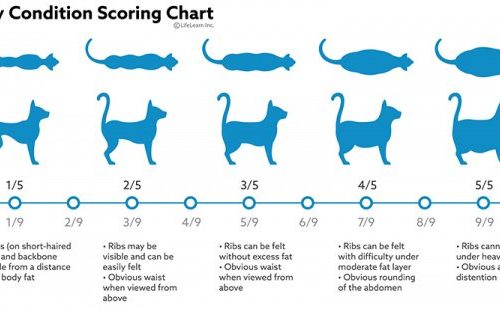
Protein in the urine of cats is increased: causes of proteinuria and what to do?

Contents
Protein in the urine of cats is the main thing
A high level of protein in the urine of a cat is just a symptom of some underlying disease.
The amount of protein in the urine is measured using a test strip or by measuring the ratio of protein to creatinine on an analyzer.
There are many reasons for high protein levels. Therefore, before starting treatment, it is necessary to make a diagnosis. The most common of these are glomerulonephritis (kidney disease) and inflammation of the bladder.
The rate of protein in the urine
Normally, there should be no protein in the urine. A small amount of protein is allowed if the analysis was carried out using a test strip. In cats, this indicator should be no more than 0,3 g / l. When measuring the protein level using an analyzer and identifying the protein / creatinine ratio, its value should be no more than 0,4. However, even a value of 0,2 should alert, often with such indicators, treatment is already prescribed.
Types of pathology
The level of protein in the urine of a cat may be elevated due to physiological or pathological causes.
In veterinary practice, physiological causes of increased protein in the urine are extremely rare. These include the action of extreme temperatures, physical overwork. Domestic cats are practically not affected by such factors, so we will not dwell on this issue in detail.
There are quite a few pathological reasons for increasing protein levels. In cats, they are quite common, in the next section we will analyze them in more detail.

Causes of increased protein in cat urine
All pathological causes of increased protein in the urine are divided into three types: prerenal (not associated with the kidneys), renal (directly associated with the kidneys), postrenal (associated with the lower urinary tract).
Prerenal causes
Protein in the urine of a cat can be elevated due to intravascular hemolysis, that is, the breakdown of red blood cells. This occurs in the presence of blood parasites, autoimmune blood diseases, zinc poisoning. Cancer diseases (lymphoma, leukemia, myeloma) can also be attributed to prerenal causes of protein detection.
Renal Causes
In this case, the increased protein may be due to damage to the glomerular system of the kidneys (glomerulonephritis). Glomerulonephritis occurs due to infection in the kidneys with blood flow, neoplasms in the kidneys, parasitic invasions (trypanosomiasis, dioctophymosis), endocrine diseases (hyperadrenocorticism). Also, the protein can be increased due to amyloidosis of the kidneys (due to a violation of protein metabolism), diabetes mellitus, hyperthyroidism. Infectious causes of kidney damage include leptospirosis and feline infectious peritonitis.
Post-renal causes
In most cases, the appearance of proteinuria in a cat is associated with inflammation and infections in the bladder area. It can also occur due to the presence of blood in the urine test, since hemoglobin contains protein in its composition. Urolithiasis can also lead to protein in the urine.

Concomitant symptoms
Proteinuria alone cannot affect the behavior of the animal. His well-being will be influenced by those factors that initially led to an increase in protein levels.
In the case of prerenal pathologies, in most cases, the animal will be depressed, his appetite will decrease, he will sleep and hide.
If the kidneys are affected, thirst and frequent urination may occur. In severe cases, anorexia, malnutrition, dehydration, and vomiting develop.
In the presence of cystitis, the most common symptoms are frequent urination in drops. Urine may also turn pink or brown-red. In complicated cases, acute urinary retention may occur – the cat will run into the tray, but there will be no urination, since the lumen of the urethra is severely inflamed or clogged with a stone.
Diagnostics
To diagnose hemolysis of blood, a general clinical blood test is required, it can be used to determine anemia. In the general analysis of urine, hemoglobin is likely to be detected in the absence of whole red blood cells.
With inflammatory and infectious processes in the urinary system, an increased content of erythrocytes, leukocytes, and bacteria can be detected in the urine.
To diagnose kidney diseases, a biochemical blood test will additionally be required, in which indicators such as urea, creatinine, potassium and phosphorus are most revealing. In the general analysis of urine, in most cases, a decrease in its density will be noted.
It is necessary to conduct an ultrasound of the abdominal cavity, with the help of which structural changes in the kidneys, thickening of the bladder wall, sediment in its cavity, and large tumors are revealed.

Treatment
It is not the protein in the urine that is treated, but the disease that led to this condition. First, the animal must be properly diagnosed.
Kidney and bladder infections are treated with antibiotics.
Blood parasites and helminthiases are treated with antiparasitic treatments.
Kidney failure requires a special lifelong diet, blood pressure control.
Large stones in the bladder are removed by surgery.
Zinc poisoning is treated symptomatically, droppers, antiemetics are prescribed. Constant monitoring of vital signs (pressure, body temperature, heart rate) is carried out.
Insulin therapy is required to treat diabetes.
Treatment for neoplasms will depend on the type of tumor. Surgical removal, chemotherapy, radiation therapy may be used
Answers to frequently asked questions
December 6 2021
Updated: December 6, 2021





